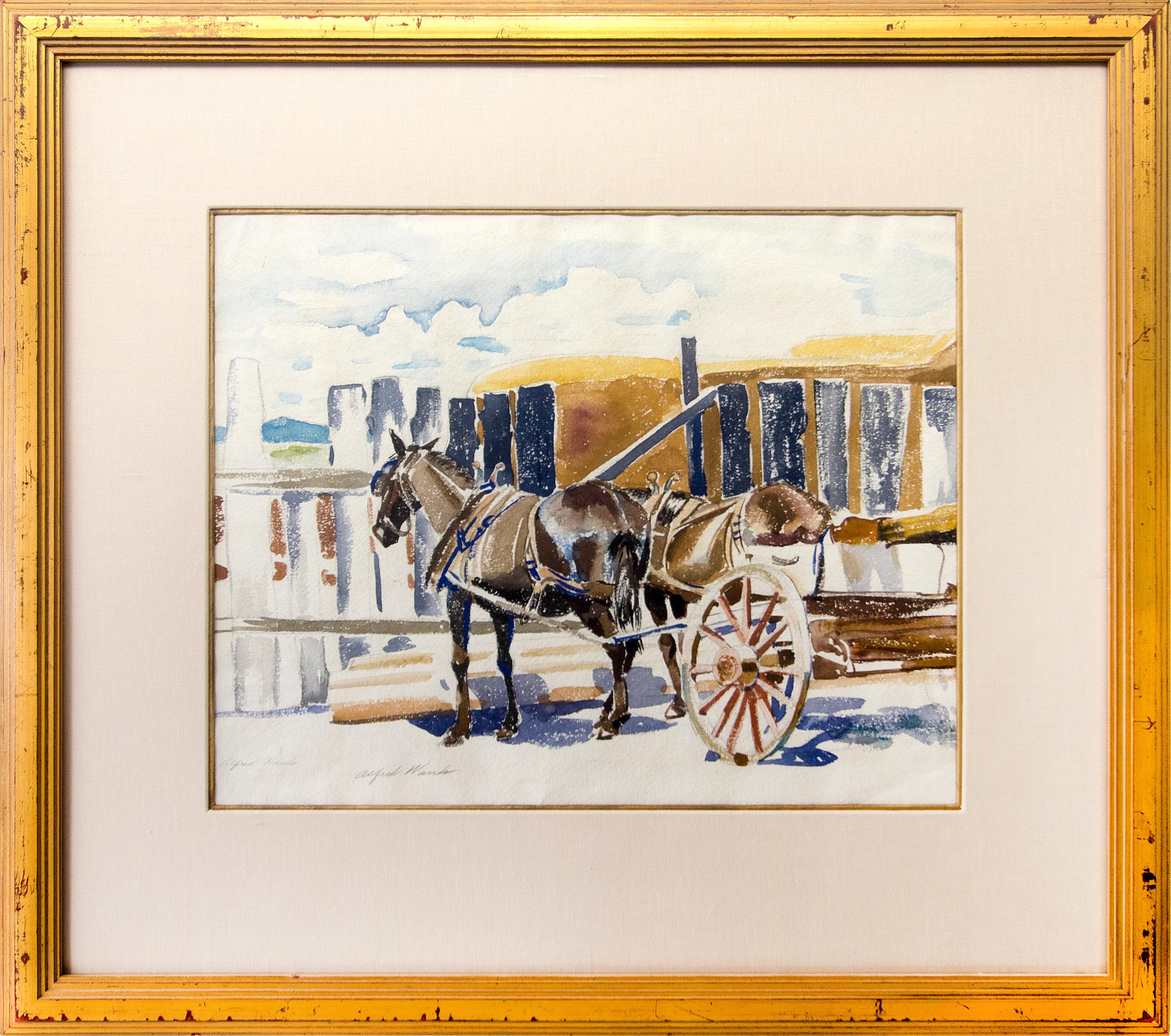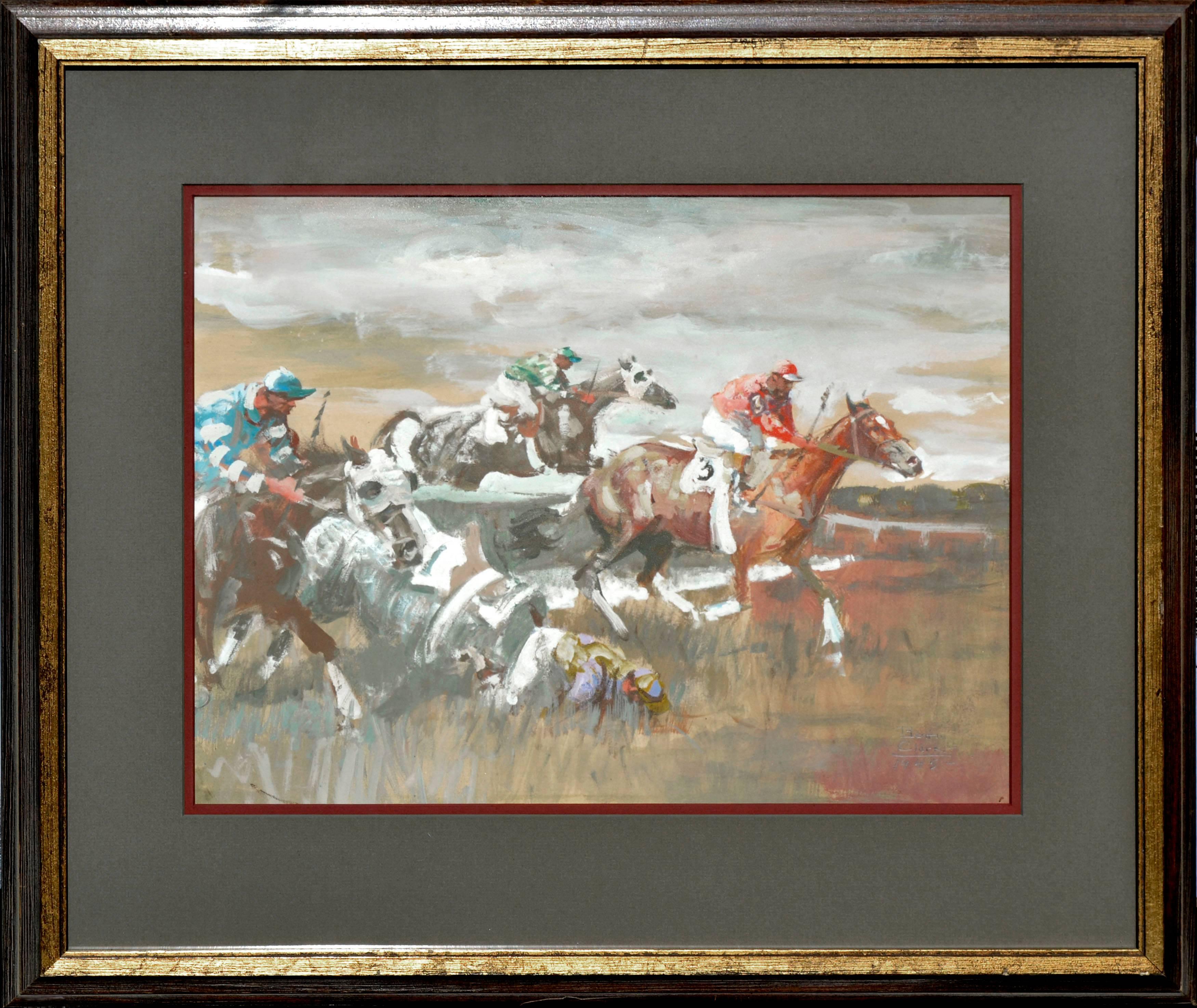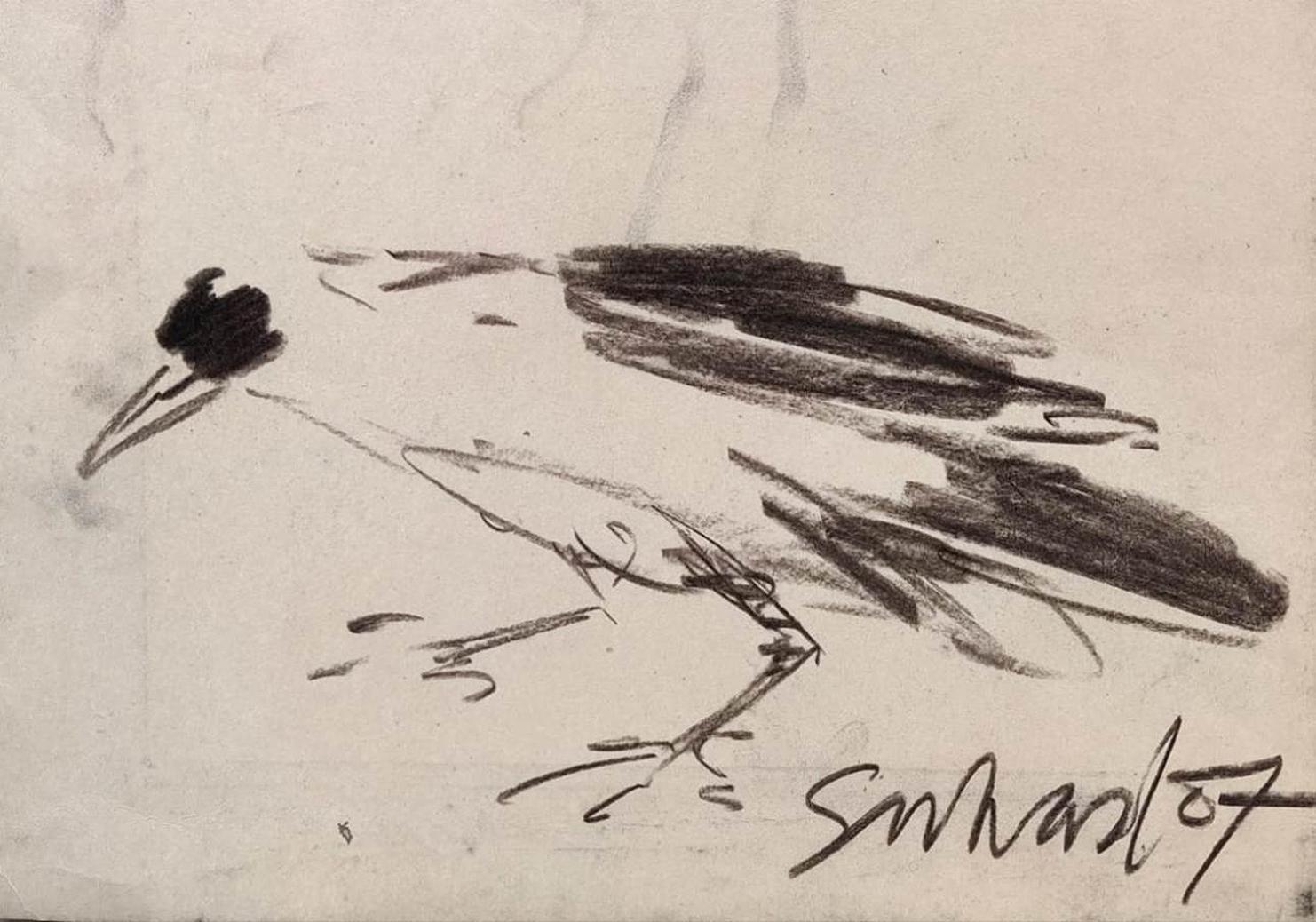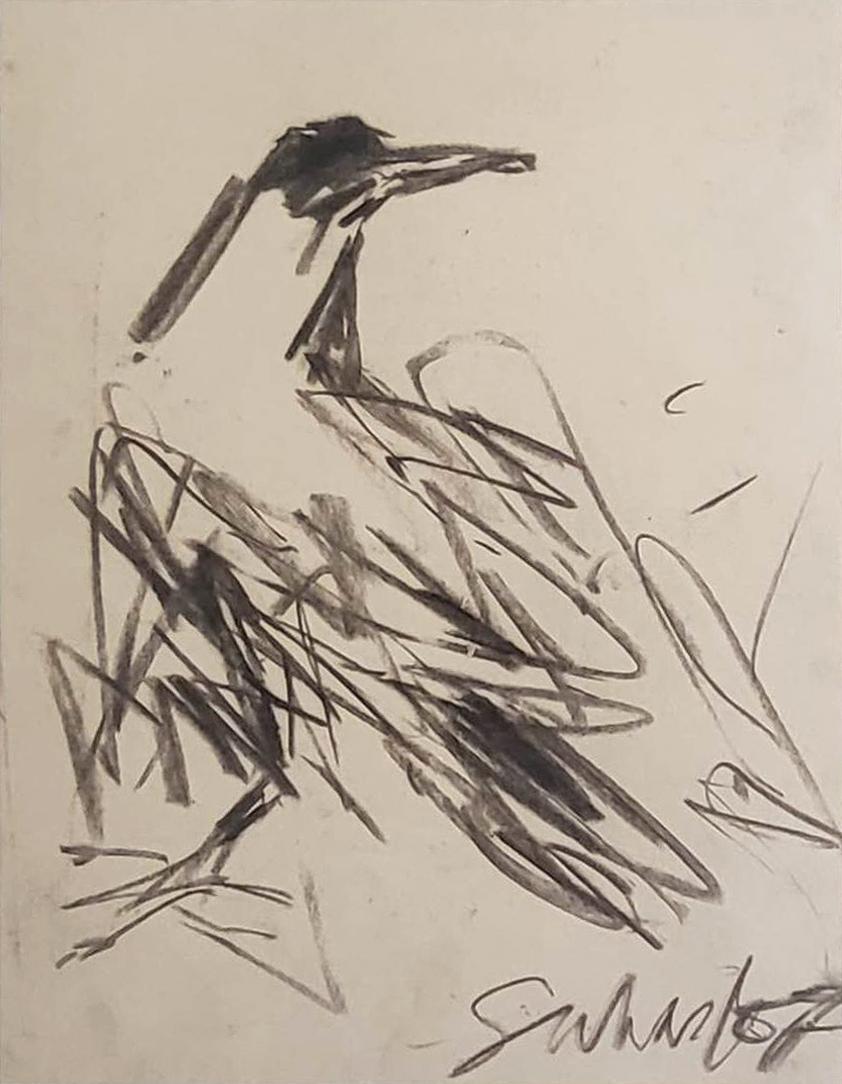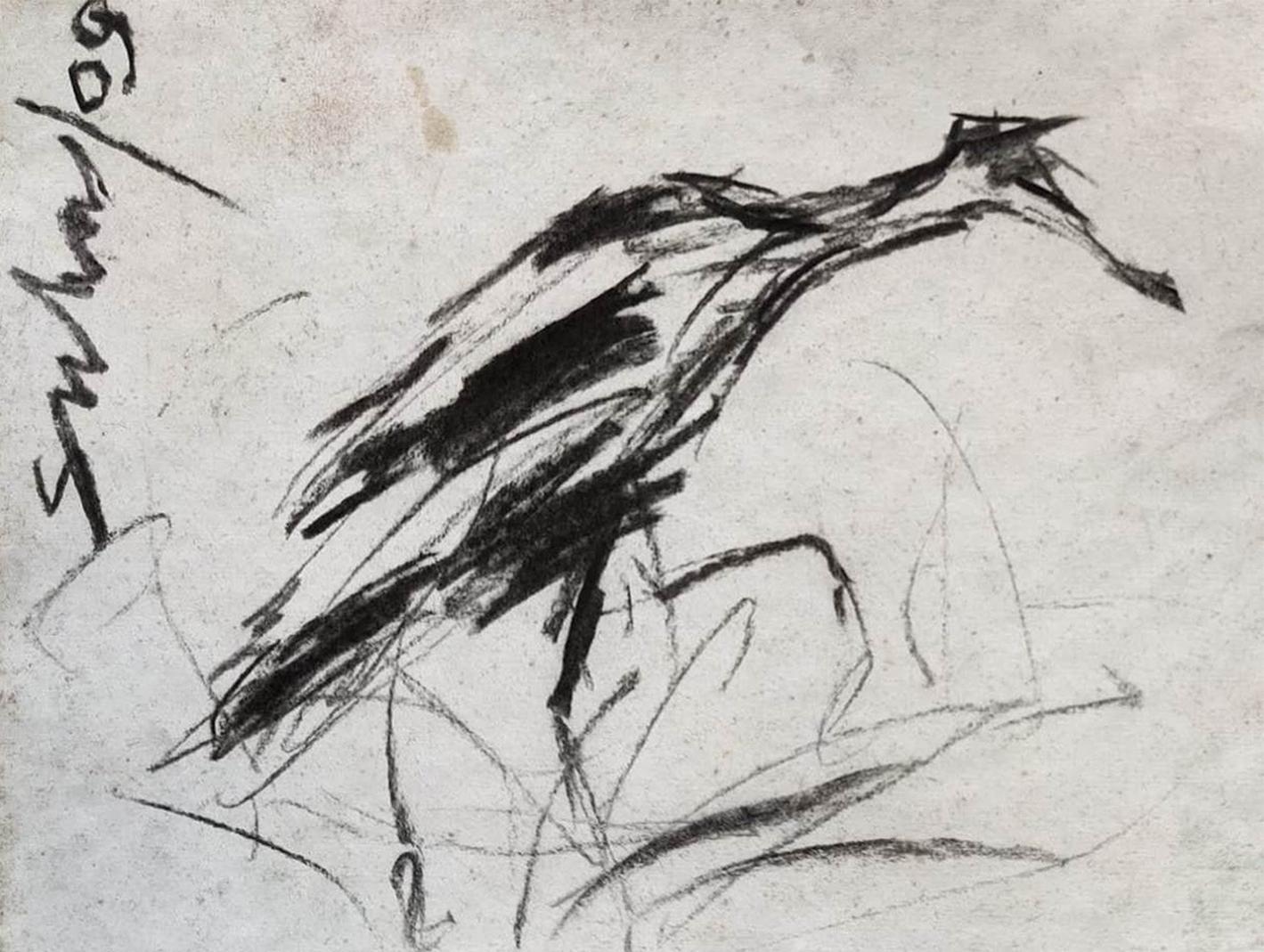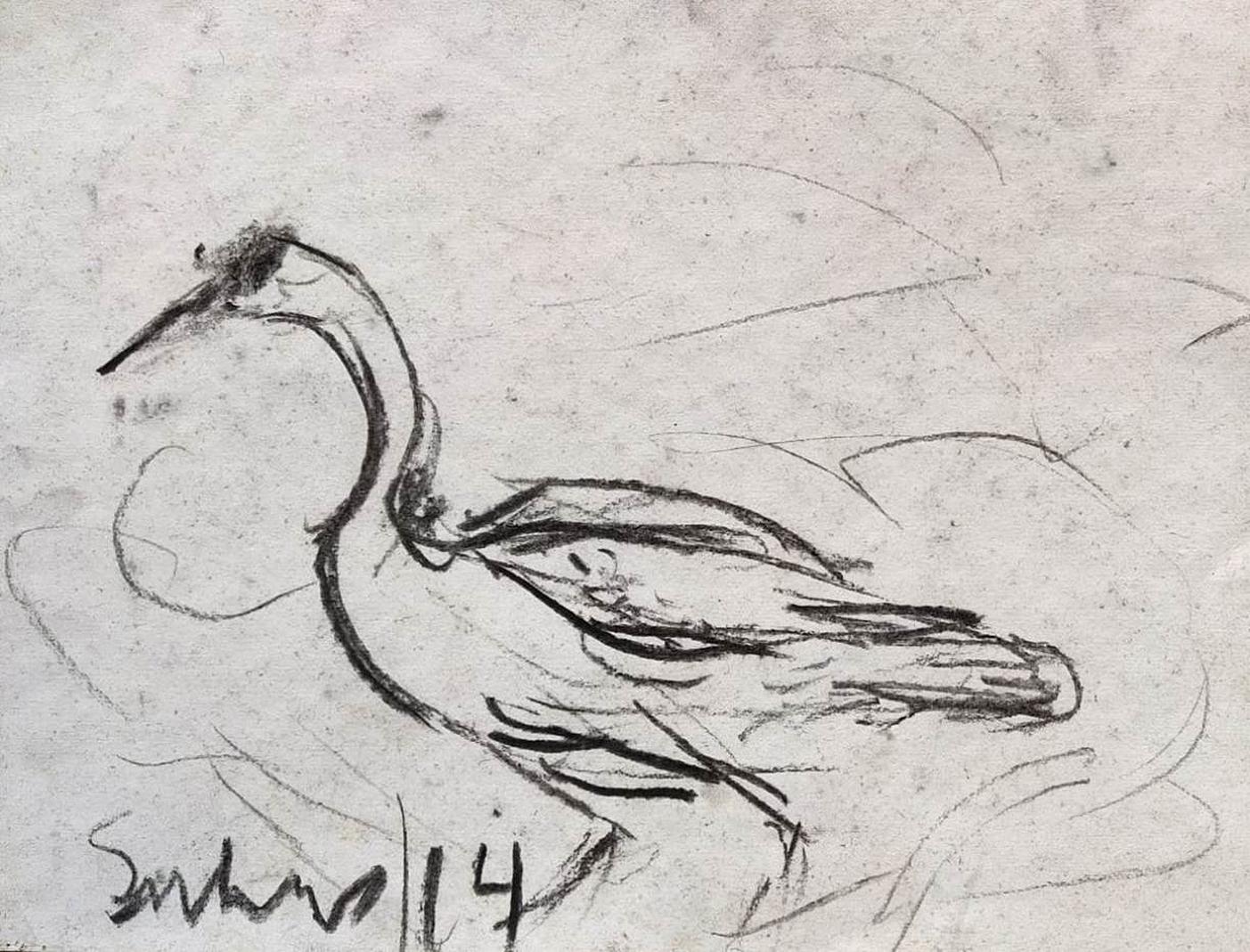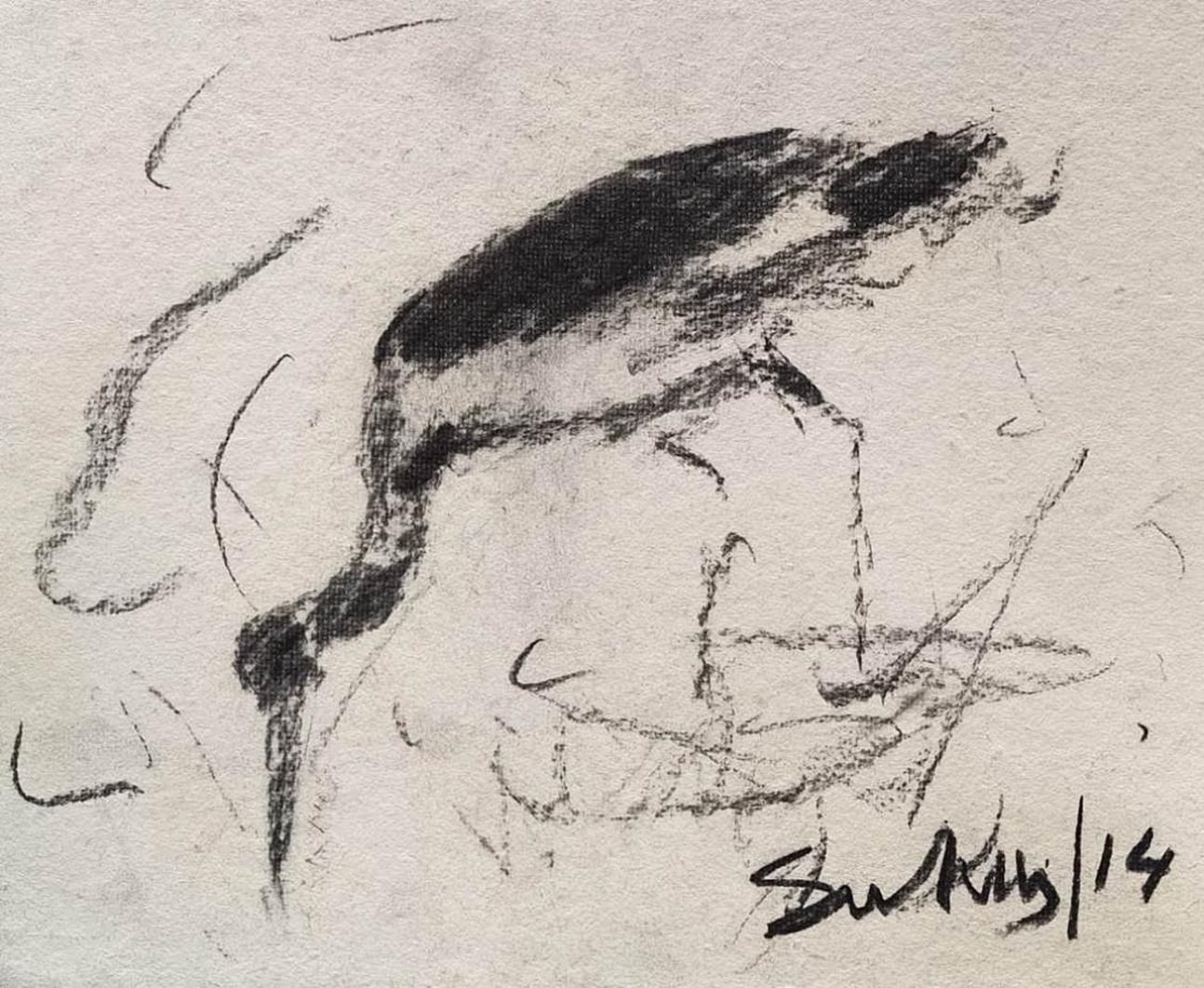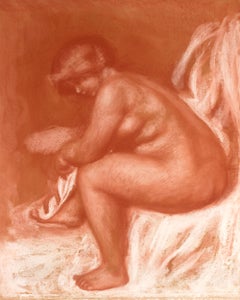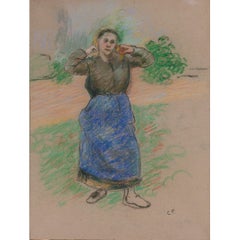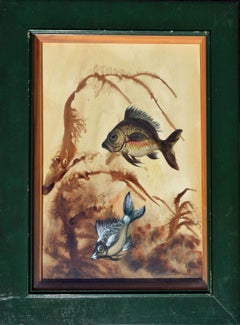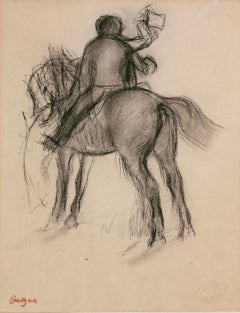
Cavalier
View Similar Items
Edgar DegasCavalierCirca 1873
Circa 1873
About the Item
- Creator:Edgar Degas (1834-1917, French)
- Creation Year:Circa 1873
- Dimensions:Height: 15.13 in (38.44 cm)Width: 13.38 in (33.99 cm)
- Medium:
- Movement & Style:
- Period:
- Condition:
- Gallery Location:New Orleans, LA
- Reference Number:Seller: 31-47041stDibs: LU1869741162
Edgar Degas
Edgar Degas, born Hilaire-Germain-Edgar De Gas in Paris in 1834, was the oldest of five children of Célestine Musson De Gas, a Creole from New Orleans, and Augustin De Gas, a banker. Degas began his schooling at age eleven, enrolling in the Lycée Louis-le-Grand, but after his mother died when he was thirteen, his father and grandfather became the main influences on him for the remainder of his youth.
Upon graduating the Lycée in 1853, at age 18, he registered as a copyist in the Louvre Museum, but his father expected him to go to law school. Degas duly enrolled at the faculty of law of the University of Paris, in November 1853, but applied little effort to his studies. In 1855, Degas met Jean-Auguste-Dominique Ingres, whose advice he never forgot: “Draw lines, young man, and still more lines, both from life and from memory, and you will become a good artist.” In April of that year, Degas was admitted to the École des Beaux-Arts.
Evidence of Degas’ classical education can be seen in his early painting, Young Spartans Exercising (ca. 1860; National Gallery, London), done while he was still in his twenties. After 1865, when the Salon accepted his history painting The Misfortunes of the City of Orléans (Musée d'Orsay, Paris), Degas did not paint Academic subjects again, focusing his attention on scenes of modern life. He began to paint scenes of such urban leisure activities as horse racing and, after about 1870, of café-concert singers and ballet dancers. Degas' interest in ballet dancers intensified in the 1870s, and eventually he produced approximately 1,500 works on the subject. These are not traditional portraits, but studies that address the movement of the human body, exploring the physicality and discipline of the dancers through the use of contorted postures and unexpected vantage points.
Following the opening of trade with Japan in 1854, many French artists, including Degas, were increasingly influenced by Japanese prints. Degas abstracted from these prints their inventive compositions and points of view, particularly in his use of cropping and asymmetry [Dancers Practicing at the Bar (1877); Dancers, Pink and Green (ca. 1890)]. He also observed how sixteenth-century Italian Mannerists similarly framed their subjects, sometimes cutting off part of a figure.
Degas had an interest in a wide range of media, including engraving, monotype, and photography. Before 1880, he generally used oils for his completed works, but after 1875, he began using pastels more frequently, even in finished works such as Portraits at the Stock Exchange (1876). He submitted a suite of nudes, all rendered in pastel, to the final Impressionist exhibition in 1886; among these was Woman Bathing in a Shallow Tub (1885). The figures in these pastels were criticized for their ungainly poses.
By the late 1880s, Degas’s eyesight had begun to fail, perhaps as a result of an injury suffered during his service in defending Paris during the Franco-Prussian War of 1870–71. After that time he focused almost exclusively on dancers and nudes, increasingly turning to sculpture. Degas continued working as late as 1912, when he was forced to leave the studio in Montmartre in which he had labored for more than twenty years. He died five years later in 1917, at the age of eighty-three.
Find original Edgar Degas drawings, prints, paintings and other art on 1stDibs.
(Biography provided by Stern Pissarro Gallery)
- Après le bain (After the bath)By Pierre Auguste RenoirLocated in New Orleans, LAFor Pierre-Auguste Renoir, Impressionism's pre-eminent figure painter, depicting the nude was an exercise in bringing the canvas to life. He once said, “I look at a nude, I see myriads of minuscule shades. I have to find those which will make the flesh on my canvas come to life and resonate.” This compelling portrait by Renoir entitled Après le bain presents the nude figure of a woman in a serene, private moment, absorbed in the task of drying herself after a bath. The artist’s mastery of light and shading is incredible, achieving a sense of vitality in this otherwise ordinary scene. Renoir is celebrated for his figural work, especially his Rubenesque female nudes, however, it was not until the artist was in his forties that he depicted the nude with any frequency. In 1881, Renoir traveled to Italy, where he studied the works of the Renaissance masters and the ancient art of Pompeii and Rome. Upon his return to France, the nude became his favored subject, and he used the motif to combine the spontaneity of Impressionism with the solid modeling of classical painting. Renoir’s medium here, sanguine, a reddish-brown chalk, was used extensively in the Renaissance by Leonardo (who employed it in his sketches for the Last Supper), Michelangelo and Raphael. Its warm hue lends itself well to depicting flesh, and the chalk drawing allows for a greater focus on line, form and texture in a departure from the aspects of color and light that so often preoccupied the Impressionists. Après le bain conveys the impression of arrested motion with perfect naturalness, deftly capturing the moment before the elegant lines of the sitter's form change position. The sitter is almost certainly Gabrielle Renard, the nanny to Renoir’s children and a frequent model for the artist. Gabrielle was the cousin of Renoir’s wife, Aline, and came to Montmartre to work for the family at the age of 16. She developed a strong bond with the family and became a favorite subject for Renoir, appearing in several of his most important works, including his 1911 Gabrielle with a Rose (Musée d'Orsay). When Renoir began to suffer from severe rheumatoid arthritis that would eventually leave him unable to walk and scarcely able to grasp a paintbrush, it was Gabrielle that would assist the artist by positioning the paintbrush between his crippled fingers. Born in Limoges, France in 1841, Renoir began his career as an apprentice to a painter of porcelain wares. He later moved to Paris at the age of 21, enrolling at the prestigious École des Beaux-Arts. It was here, while studying under Charles Gleyre, that Renoir attained a tremendous appreciation for the academic style of painting, a quality that would last throughout his career. This was also when he met Claude Monet and several other classmates, with whom he would later form the Impressionists. Working closely with Monet, Renoir began experimenting with the portrayal of light and its effect on his canvases. The youngest member of the Impressionist movement, an astute Renoir recognized how a subject was constantly changing due to the dynamic effects of light on color. Relying heavily upon his academic training that focused on composition, lines and descriptive details, Renoir distinguished himself among his contemporaries. His intuitive use of color and expansive brushstroke, along with acute attention to his subject, have placed him among the finest painters in history. This work is accompanied by a certificate of authenticity and will be included in the forthcoming catalogue raisonné of the work of Pierre-Auguste Renoir from the Wildenstein Plattner Institute. Circa 1898 Canvas: 43 1/2" high x 35 1/2" wide Frame: 57 3/4" high x 49 1/4" wide Provenance: Galerie Durand-Ruel, Paris (acquired from the artist on January 25, 1899) J. Pereire Collection, France (1966) Sam Salz, New York (before 1981) Claus Virch, Paris French Compagny, Inc., New York Larry Silverstein, New York (circa January 1987) Le Clos de Sierne Gallery, Geneva Galerie Heyram, Paris (October 1987) Francis Gross M.S. Rau, New Orleans Literature: B. Schneider, Renoir, Berlin, 1957, p. 95 (illustrated in color, p. 83) M. Gauthier, Renoir, Paris, 1958, p. 83 (illustrated in color; erroneously dated '1916' and titled 'Woman in her toilet') F. Fosca, Renoir, L'homme et son obra, Paris, 1961, p. 280 (illustrated, p. 95; erroneously dated 'about 1890' and titled 'After the Bath...Category
19th Century Impressionist Nude Paintings
MaterialsCanvas, Paper, Chalk
Price Upon Request - Paysanne Nouant son Foulard (Peasant Arranging her Scarf)By Camille PissarroLocated in New Orleans, LAThis intimate work by Camille Pissarro represents a period of significance for the Impressionist master. The early 1880s was a time of great experimentation for the artist, after he spent much of the preceding decade devoted to landscape painting. Shifting focus, he embarked on a series of works in a range of media dedicated to the human figure - particularly peasant women. In watercolor, gouache, pastel, and print, Pissarro captured the rural female and the minute moments of domestic life. Depicting a peasant woman tying her scarf, Paysanne Nouant son Foulard displays the harmony of color and composition that typifies his work of the 1880s. Composed of a symphony of color and strokes of paint, the work exemplifies the plein air technique of Pissarro's best Impressionist canvases. A true master of his art, no other artist successfully chronicled rural peasant life quite like Pissarro. Counted among the most respected artists of the 19th century and widely considered the father of Impressionism, Pissarro’s works experienced a surge in interest in the early 2000s. This is reflected in Pissarro’s new auction record of over $32.1 million, set at a 2014 Sotheby’s auction in London, which far surpassed his previous record of $14.6 million. Born in St. Thomas in the Danish West Indies, Pissarro was sent to school in Paris at the age of 11, where he first displayed a talent for drawing. In 1855, having convinced his parents of his determination to pursue a career as an artist rather than work in the family shipping business, he returned to Paris where he studied at the Académie Suisse alongside Claude Monet. At the outbreak of the Franco-Prussian War in 1870, Pissarro moved to England. With Monet, he painted a series of landscapes around South-East London and studied English landscape painters in the museums. When he returned home to Louveciennes a year later, Camille discovered that all but 40 of the 1500 paintings he had left there - almost 20 years of work - had been vandalized. In 1872, Camille settled in Pontoise where he remained for the next 10 years, gathering a close circle of friends around him. Gauguin was among the many artists to visit him there and Cézanne, who lived nearby, came for long periods to work and learn. In 1874, Pissarro participated in the first Impressionist exhibition...Category
Late 19th Century Impressionist Portrait Drawings and Watercolors
MaterialsPastel, Paper
- Les Buissons Ardents By André BrasilierBy André BrasilierLocated in New Orleans, LAAndré Brasilier b. 1929 French Les buisson ardents Signed “André Brasilier” (lower right); signed, dated and inscribed "Pour Alexis. Mai 1982" (en verso) Oil on canvas Swirling w...Category
20th Century Post-Impressionist Landscape Paintings
MaterialsOil, Canvas
- Two Borzois by Otto EerelmanBy Otto EerelmanLocated in New Orleans, LAThis monumental painting is by the celebrated Dutch artist Otto Eerelman, one of 19th-century Europe's most popular and important animal portraitists, an...Category
19th Century Academic Animal Paintings
MaterialsCanvas, Oil
- Danseuse By Pierre Carrier-BelleuseBy Pierre Carrier-BelleuseLocated in New Orleans, LAPierre Carrier-Belleuse 1851-1932 | French Danseuse Signed “Pierre Carrier-Belleuse” (lower right) Pastel on canvas Strikingly elegant, this extraordinary pastel by French impress...Category
19th Century Impressionist Figurative Drawings and Watercolors
MaterialsPastel, Canvas
- Maternité by Henri LebasqueBy Henri LebasqueLocated in New Orleans, LAHenri Lebasque 1865-1937 French Maternité (Maternity) Oil on canvas Signed “Lebasque” (lower left) In this effusive oil on canvas, Henri Lebasque captures a contemplative scene o...Category
Early 20th Century Impressionist Figurative Paintings
MaterialsCanvas, Oil
- Circus Paper, mixed media, 27.5x39.5 cmBy Aleksandra BelcovaLocated in Riga, LVCircus Paper, mixed media, 27,5x39,5 cm ''Circus'' is a delightful and cheerful composition that celebrates the enchanting world of the circus, inviting viewers to immerse themselves in the captivating and joyous experience that only a circus can provide. The artist has skillfully combined various materials and techniques to bring the circus-themed artwork to life. The use of mixed media allows for a dynamic and multi-dimensional visual experience, where different textures and colors blend harmoniously to create an engaging spectacle. Aleksandra Belcova...Category
1970s Impressionist Figurative Paintings
MaterialsPaper, Pastel, Watercolor, Mixed Media
- Haymaking time 1930, pastel on paper, 30x39 cmBy Aleksandra BelcovaLocated in Riga, LVHaymaking time 1930, pastel on paper, 30x39 cm "Haymaking Time" is a serene and evocative artwork that transports viewers to a simpler time, celebrating the beauty of the countryside and the age-old agricultural activities that have shaped the lives of people for generations. The use of pastels and the light figurative style imbue the artwork with a sense of warmth and nostalgia, inviting viewers to appreciate the natural rhythms of rural life. Aleksandra Belcova...Category
1930s Impressionist Figurative Paintings
MaterialsPaper, Pastel
- Vintage Black & Blue GoldfishBy Vittorio GuidottiLocated in Soquel, CAVibrant watercolor of a black and a blue fish painting by Florence, Italy artist Vittorio Guidotti (Italy, b-1922). Unsigned. "Original watercolor b...Category
1930s Impressionist Animal Paintings
MaterialsPaper, Watercolor
$319 Sale Price20% Off - Watercolor Painting, Horses, Carriage, Buildings in Blue, Yellow and BrownBy Alfred WandsLocated in Denver, COVintage original modernist watercolor painting of horses attached to a carriage and buildings by Alfred Wands (1904-1998). It is painted in blues, yellows, and browns. Presented in a...Category
20th Century American Impressionist Animal Paintings
MaterialsWatercolor, Paper
- The Steeple Chase figurativeBy Benton ClarkLocated in Soquel, CAA vintage, dramatic scene of the rigorous sport of steeplechasing by artist Benton Henderson Clark (American, 1895-1964). Signed and dated lower right "Benton Clark 1945." Presented ...Category
1940s American Impressionist Animal Paintings
MaterialsGouache, Paper
$2,600 Sale Price20% Off - The Pekingese (Le Pékinois), drawing of a dog by Georges Manzana PissarroBy Georges Henri Manzana PissarroLocated in London, GBLe Pékinois by Georges Manzana Pissarro (1871 - 1961) Charcoal on paper 41 x 49 cm (16 ¹/₈ x 19 ¹/₄ inches) Signed lower centre, Manzana Pissarro This work is accompanied by a cer...Category
1920s Post-Impressionist Animal Paintings
MaterialsPaper, Charcoal
Recently Viewed
View AllRead More
Wear Louis Comfort Tiffany’s Genius on Your Finger with This Vivid Ring
In his jewelry making, the designer rarely used diamonds — this rare example has two.
You Won’t Find a More Handsome Stopwatch Than This 1890s Pocket Chronograph
A Grand Complication from the golden era of pocket watches, the Marius Lecoultre pocket watch does everything but uncork your wine.

